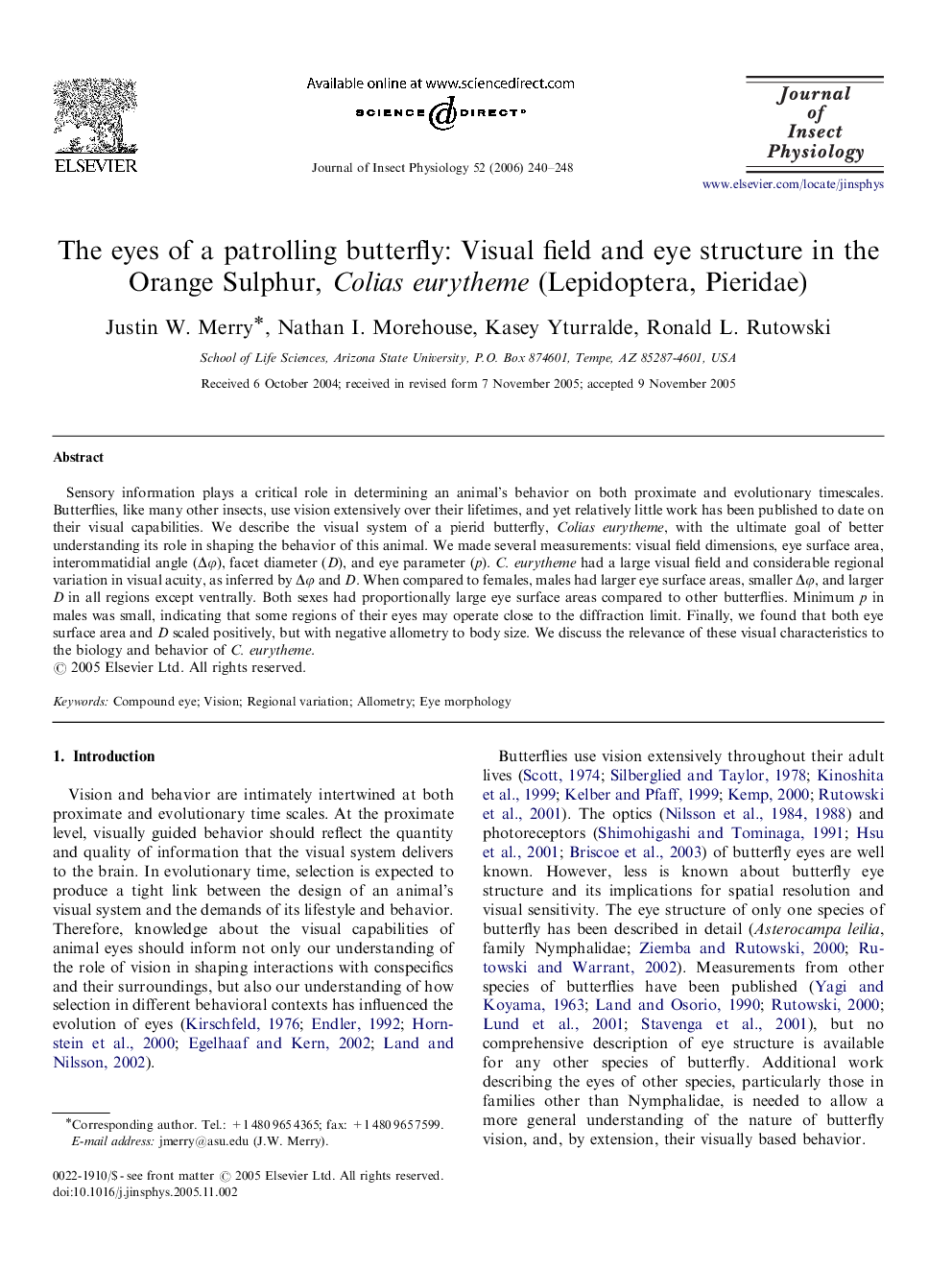| Article ID | Journal | Published Year | Pages | File Type |
|---|---|---|---|---|
| 2841250 | Journal of Insect Physiology | 2006 | 9 Pages |
Sensory information plays a critical role in determining an animal's behavior on both proximate and evolutionary timescales. Butterflies, like many other insects, use vision extensively over their lifetimes, and yet relatively little work has been published to date on their visual capabilities. We describe the visual system of a pierid butterfly, Colias eurytheme, with the ultimate goal of better understanding its role in shaping the behavior of this animal. We made several measurements: visual field dimensions, eye surface area, interommatidial angle (Δϕ), facet diameter (D), and eye parameter (p). C. eurytheme had a large visual field and considerable regional variation in visual acuity, as inferred by Δϕ and D. When compared to females, males had larger eye surface areas, smaller Δϕ, and larger D in all regions except ventrally. Both sexes had proportionally large eye surface areas compared to other butterflies. Minimum p in males was small, indicating that some regions of their eyes may operate close to the diffraction limit. Finally, we found that both eye surface area and D scaled positively, but with negative allometry to body size. We discuss the relevance of these visual characteristics to the biology and behavior of C. eurytheme.
